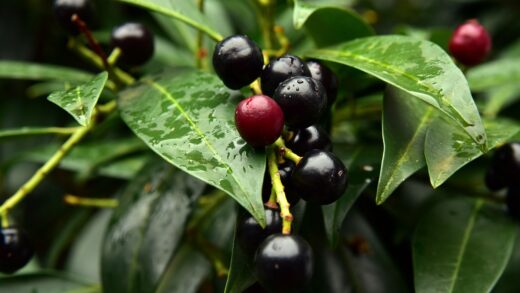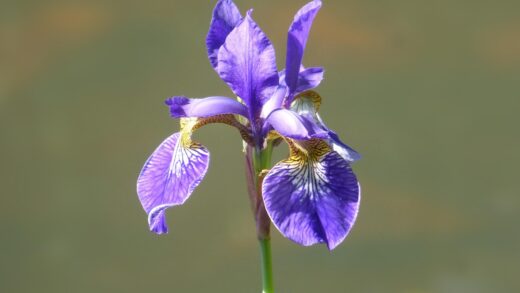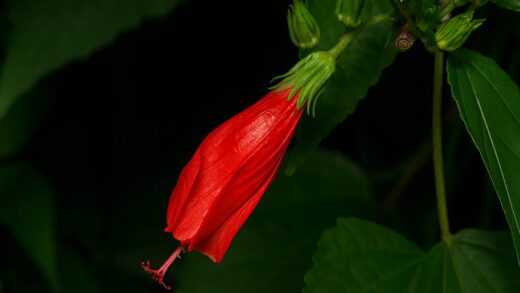While generally a robust and resilient plant, bacopa is not entirely immune to problems from diseases and pests. Proactive monitoring and good cultural practices are the best defence, as they create an environment where the plant is strong and less susceptible to attack. Most issues that arise are often linked to environmental stress, such as improper watering, poor air circulation, or nutrient deficiencies. A healthy, well-cared-for plant has a much greater ability to fend off potential threats. Understanding the common culprits and how to manage them is key to keeping your bacopa looking beautiful all season long.
The most prevalent diseases that affect bacopa are fungal in nature, thriving in the damp, humid conditions that the plant itself enjoys. Root rot, caused by overwatering and poorly draining soil, is perhaps the most serious threat, as it attacks the plant’s vital root system and is often fatal. Other fungal issues like botrytis (grey mould) and powdery mildew can affect the leaves and flowers, diminishing the plant’s aesthetic appeal and, if left unchecked, compromising its health. Prevention, primarily through proper watering techniques and ensuring good air circulation, is far more effective than trying to cure an established infection.
On the pest front, bacopa can fall prey to several common garden insects, particularly those with sucking mouthparts that feed on the plant’s sap. Aphids are a frequent problem, often colonizing the tender new growth and flower buds. Whiteflies and spider mites can also become established, especially in hot, dry conditions or on plants that are under stress. While these pests can multiply quickly, early detection and prompt intervention can usually bring them under control before they cause significant damage.
This article will serve as a practical guide to identifying and managing the most common diseases and pests that can affect bacopa. It will cover preventative strategies, how to recognize the early signs and symptoms of an issue, and provide guidance on both organic and chemical control methods. By arming yourself with this knowledge, you can act swiftly and effectively to protect your plants, ensuring they remain a healthy and vibrant feature in your garden.
Common fungal diseases
Root rot is one of the most destructive diseases that can affect bacopa, and it is almost always a result of overwatering or soil that does not drain adequately. The disease is caused by various soil-borne fungi, such as Pythium and Phytophthora, which thrive in anaerobic (oxygen-deprived) conditions created by waterlogged soil. The initial symptoms can be misleading, as the plant may appear wilted, causing the gardener to water it even more. Other signs include yellowing lower leaves, stunted growth, and a general failure to thrive. If you suspect root rot, you should gently remove the plant from its pot and inspect the roots; healthy roots are firm and white, while diseased roots will be brown, mushy, and may have a foul odour.
More articles on this topic
Botrytis blight, commonly known as grey mould, is another fungal issue that can plague bacopa, particularly during prolonged periods of cool, damp weather. This disease typically appears as brownish, water-soaked spots on flowers, leaves, and stems, which are soon covered by a fuzzy, greyish-brown mould. It often attacks fading flowers and damaged tissue first, so keeping the plant clean and removing spent blooms can help to prevent it. To manage botrytis, it is crucial to improve air circulation around the plant by providing adequate spacing and to water at the base of the plant to keep the foliage as dry as possible.
Powdery mildew is a common fungal disease that is easily identifiable by the characteristic white, powder-like patches that appear on the surfaces of leaves and stems. While it may not kill the plant outright, a severe infection can reduce photosynthesis, stress the plant, and make it unsightly. Powdery mildew tends to be a problem in humid conditions with poor air circulation, but unlike many other fungi, it does not require free-standing water on the leaves to become established. Again, preventative measures like proper spacing and selective pruning to open up the plant are key.
Preventing these fungal diseases is always the best course of action. This starts with using a sterile, well-draining potting mix and a container with ample drainage holes. Water your bacopa only when the top layer of soil feels dry, and always water thoroughly but infrequently rather than a little bit every day. Ensure good air circulation by not overcrowding your plants. If a fungal issue does take hold, remove and destroy the affected parts of the plant immediately to prevent its spread. In persistent cases, an application of a suitable fungicide may be necessary.
Identifying and managing common pests
Aphids are one of the most common pests to trouble bacopa. These small, pear-shaped insects can be green, black, or pink and typically congregate in clusters on the tender new growth, stem tips, and undersides of leaves. They feed by piercing the plant tissue and sucking out the sap, which can cause new growth to be distorted, curled, or stunted. Aphids also excrete a sticky substance called honeydew, which can lead to the growth of sooty mould. For minor infestations, a strong spray of water from a hose can be enough to dislodge them. For more persistent problems, insecticidal soap or neem oil can be very effective.
More articles on this topic
Whiteflies are another sap-sucking insect that can become a nuisance, especially in warm climates or greenhouses. These tiny, moth-like insects will fly up in a cloud when the plant is disturbed and are typically found on the undersides of the leaves. Like aphids, they cause damage by feeding on sap and excreting honeydew, leading to yellowing leaves and reduced plant vigour. Yellow sticky traps can be useful for monitoring and trapping adult whiteflies. Regular applications of insecticidal soap or neem oil, ensuring thorough coverage of the leaf undersides, are the best methods of control.
Spider mites are a particularly troublesome pest, especially during hot, dry weather. These arachnids are incredibly small and difficult to see with the naked eye, but their damage is distinctive. They create fine webbing on the plant, typically on the undersides of leaves and where leaves join the stems. Their feeding causes the leaves to develop a stippled or speckled appearance, eventually turning yellow or bronze before drying up and dropping off. Because they thrive in dry conditions, increasing humidity around the plant can help deter them. Horticultural oils and insecticidal soaps are effective treatments, but multiple applications are often necessary to control their rapid life cycle.
Good pest management begins with regular inspection. Make it a habit to check your bacopa plants every few days, paying close attention to the undersides of leaves and new growth. Early detection is crucial, as it is much easier to control a small pest population before it explodes. Encouraging beneficial insects, such as ladybugs and lacewings, into your garden can also provide a natural form of pest control. If you do need to resort to treatments, always try the least toxic options first, like water sprays or insecticidal soaps, before considering stronger chemical pesticides.
Preventative cultural practices
The most effective strategy for dealing with diseases and pests is to prevent them from becoming a problem in the first place. This begins with providing the plant with its ideal growing conditions to keep it healthy and vigorous. A stressed plant is always more vulnerable to attack. Ensure your bacopa receives the right amount of light—morning sun with afternoon shade is ideal—as plants that are stressed by too much intense sun are more susceptible to pests like spider mites.
Proper watering is perhaps the single most important cultural practice for disease prevention. As discussed, overwatering is the primary cause of fatal root rot. By using a well-draining soil mix and allowing the top layer of soil to dry out between waterings, you can create an environment that is hostile to the fungi that cause this disease. When you do water, apply it directly to the soil to keep the foliage dry, which helps to prevent foliar diseases like powdery mildew and botrytis. Good watering habits are the foundation of a healthy plant.
Ensuring good air circulation is another critical preventative measure. When planting bacopa in containers or garden beds, give them enough space to allow air to move freely around the foliage. Avoid cramming too many plants into one hanging basket. If a plant becomes overly dense, do not hesitate to thin it out by selectively pruning some of the stems. This not only improves airflow but also encourages new, healthy growth. Keeping the area around the plants clean and free of fallen leaves and other debris also reduces potential hiding spots for pests and breeding grounds for fungal spores.
Finally, a consistent and balanced fertilization program contributes to the plant’s overall resilience. A well-nourished plant has the resources to build strong cell walls and produce defensive compounds that can help it resist both pests and diseases. However, it is important to avoid excessive nitrogen fertilization, as this can produce a flush of soft, succulent growth that is particularly attractive to sap-sucking insects like aphids. A balanced approach to nutrition is a key component of an integrated pest and disease management strategy.
Treatment options: organic and chemical
When preventative measures are not enough and a pest or disease problem arises, there are several treatment options available. It is always best to start with the most environmentally friendly and least toxic methods. For many common pests like aphids and spider mites, a strong jet of water can be surprisingly effective at physically knocking them off the plant. This should be the first line of defence, especially for small, localized infestations.
If physical removal is not sufficient, organic insecticides like insecticidal soap and neem oil are excellent next steps. Insecticidal soaps work by disrupting the outer cell membrane of soft-bodied insects, and they are effective against aphids, whiteflies, and spider mites. Neem oil is a broad-spectrum insecticide, miticide, and fungicide that works in multiple ways, including as a repellent and growth regulator. For both products, it is crucial to achieve thorough coverage, especially on the undersides of leaves where pests congregate, and repeated applications may be necessary.
For fungal diseases like powdery mildew or botrytis, organic fungicides are also available. Products based on potassium bicarbonate, sulfur, or copper can be effective if applied at the first sign of disease. Neem oil also has fungicidal properties and can help to manage mild powdery mildew infections. Remember to remove and destroy any heavily infected plant parts to reduce the number of fungal spores and prevent the disease from spreading further.
In cases of severe or persistent infestations that do not respond to organic treatments, chemical pesticides or fungicides may be considered as a last resort. If you choose to use these products, it is imperative to read and follow the label instructions carefully. Ensure the product is rated for use on ornamental flowering plants and is effective against the specific pest or disease you are targeting. Always apply these chemicals responsibly, taking care to avoid spraying during windy conditions or when pollinators like bees are active, to minimize harm to the wider garden ecosystem.
📷: Deavmi, CC BY-SA 3.0, via Wikimedia Commons


















